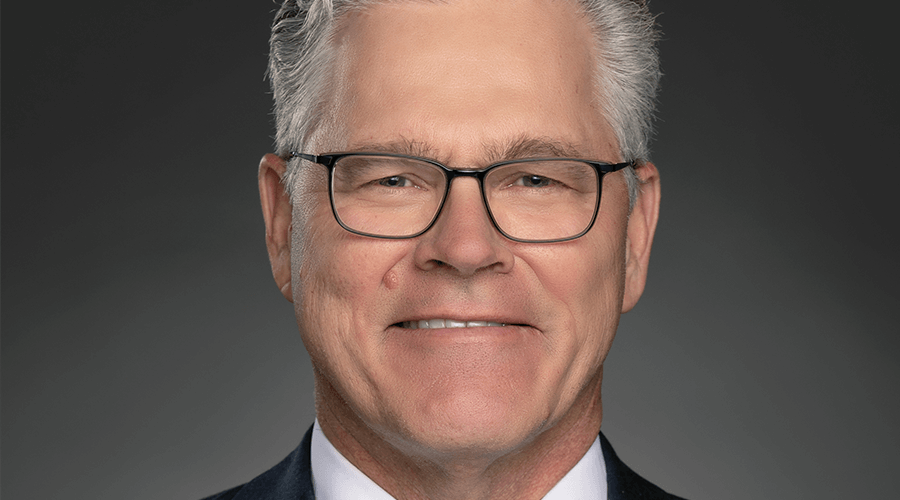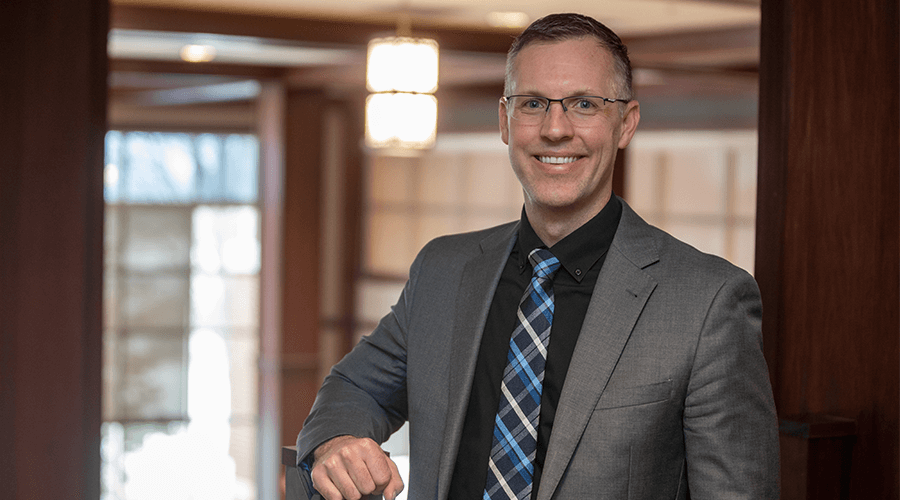Randy Bury is approaching two years in his role as president and CEO of The Evangelical Lutheran Good Samaritan Society and has done a great deal of reflecting and planning as he moves “ever forward,” as the Society founder used to say.
Randy is also taking on a new role as a board member of the American Health Care Association. Serving as president of the Society while also serving on the board of the nation’s largest association of long-term and post-acute care providers will present many opportunities for Randy to advance the Society’s mission and to offer insight to a national association.
A career at Sanford Health
Randy Randy has spent his entire career with Sanford Health, from taking on an internship with Sioux Valley Hospital (now Sanford USD Medical Center) when he was a student at Augustana University until the beginning of 2019, when he became president of the Good Samaritan Society. His accumulated 39 years of executive leadership experience with Sanford Health includes serving as president of health services administration and chief administrative officer, among other roles.
Becoming the Society’s top leader
As president and CEO of the Society, Randy has focused on many things, though primarily centering his attention on merging the two organizations — integrating many corporate service departments and operations — and taking advantage of the benefits of a combined entity.
But most importantly, Randy has set his attention on providing care across the lifespan. A major acute-care organization and a major long-term care organization — Sanford Health and the Society — can ensure a smooth transition of care services for their communities from the beginning to the end of life.
Meeting new and existing challenges
While tasked with the difficult role of being a leader in the long-term care field, Randy has proven his expertise and ability. “No doubt the long-term care industry is challenging for everyone,” Randy says. “But we were able to make improvements rather quickly.” This included drawing on the strength of leadership from both sides, both here at the headquarters in Sioux Falls and out in the regions.
This leadership was important when it came to Hurricane Dorian in September 2019. The Society relied on three groups: local leaders in Florida, a team from the Sioux Falls headquarters that traveled to there and a central command that remained in Sioux Falls. While many residents had to be evacuated, the Society made it through thanks to an excellent, well-coordinated combined organization.
Confronting COVID-19
Randy relaxed for a moment: He thought his “big crisis” moment had passed. Then, the COVID-19 pandemic took hold. The risk for severe illness from the novel coronavirus increases with age, affecting the long-term care community. While the Good Samaritan Society compares favorably in how it has managed, Randy emphasizes, “One life lost is too many,” and the Society will continue to take all precautions.
During the coronavirus pandemic, the benefits of a combined organization have again been recognized through shared supply chain expertise, better access to personal protective equipment, easy access to clinical expertise, testing and more.
It has also revealed the confidence Randy has in the staff at all locations to manage COVID-19. The front-line health care heroes are dealing both with the dangerous pandemic and the anxiety it causes. However, they have been able to adapt to new protocols, rules and regulations.
“I want to acknowledge the work and lift up the front-line staff for everything they do,” Randy says.
Looking at the long term in long-term care
The experience with COVID-19 has provided many lessons that will be adapted to any future crisis. This will be important moving forward. But the day-to-day work of long-term care must also continue as well, and Randy remains focused on issues like value-based care and operational excellence.
These are issues he also will deal with as a new member of the national board of the AHCA. In fact, the organizational work will deal with the pandemic immediately and other health care issues over the long term. AHCA is an organization that provides its members with a voice to reach out to regulatory bodies like the Centers for Medicare and Medicaid Services to present their perspective, raise issues and propose solutions.
Getting involved
Randy feels a responsibility to be active in key organizations like these and encourages leaders and employees at all levels to participate in organizational and association work. Randy, in particular, will bring a unique perspective to the board with his extensive background on the acute side of care.
He also will draw on his experience previously serving on the board of the South Dakota Association of Healthcare Organizations, being president of the state chapter of the American College of Health Care Executives and more.
“These organizations share a common ground in terms of the advocacy work they do,” Randy says.
Finally, it will be of great benefit to Sanford Health and the Society — and subsequently those the health system serves — to have a voice on this national board.



